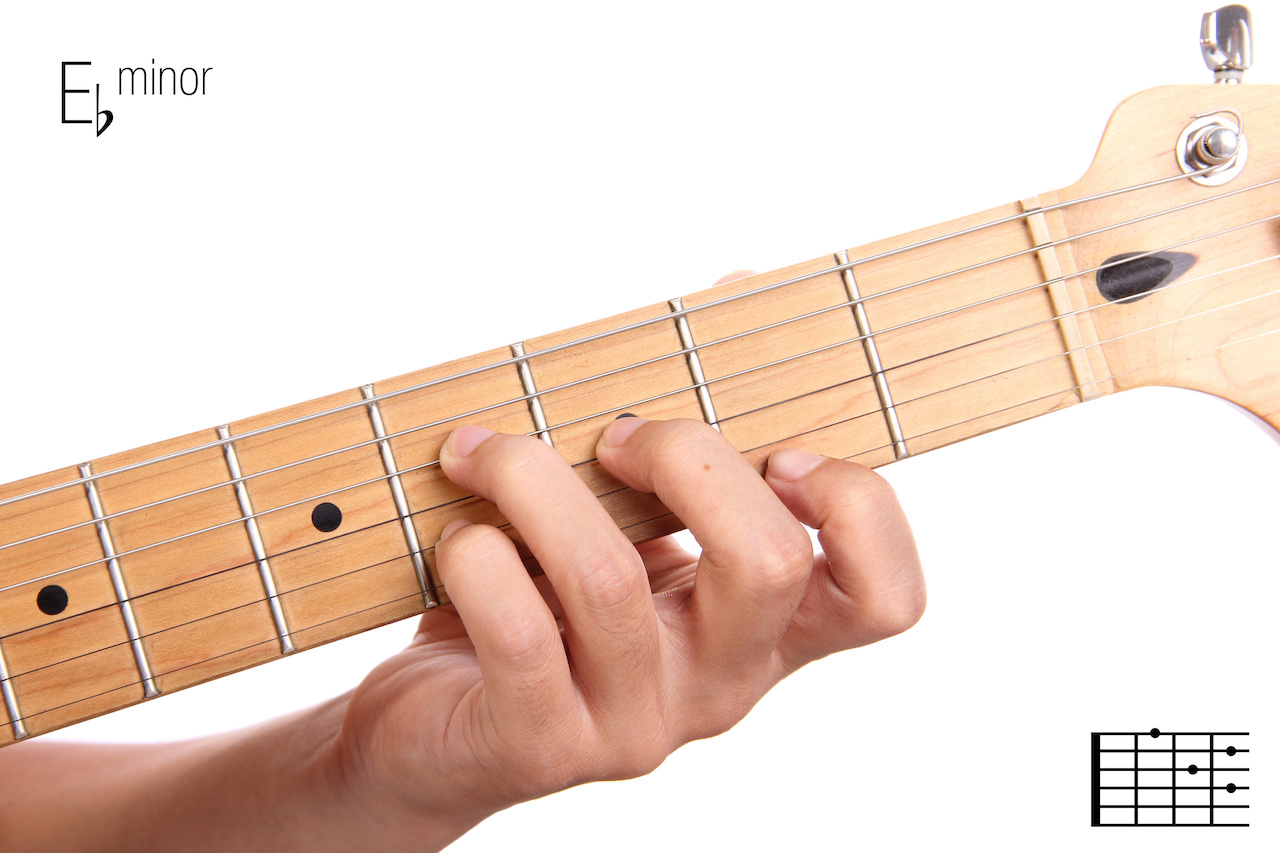
A half-diminished chord is written with a " ∅", like a D ∅7, where a flattened seventh (♭7) is added to a diminished D chord. A diminished chord is written by adding "dim" or " Ο", like in Ddim or D Ο, meaning a D diminished chord. A minor chord is written by adding a small "m", like in Fm or Cm, meaning a F minor or C minor chord. A Major chord is written by the note, like E♭ or B♭, meaning a E♭ Major or B♭ Major chord. This will always seem confusing at the start, but the tables below will help in seeing the difference in chords and their names. This applies to eleventh and thirteenth chords as well, although with the 4th and 6th notes respectively. A ninth chord always implies the chord being 1-3-5-7-9, where the "F" is considered the ninth in a E♭M 9 chord, not the second. A three note E♭ chord adding the "F" note would refer to the note as a second (2nd) in a 2 chord, like a E♭ sus2 or a E♭ add2. A "F" note is the second and the ninth note in E♭ Major. Seventh chords (7th), ninth chords (9th), eleventh chords (11th), and thirteenth chords (13th) are counted by repeating the notes in the next octave. In the Key of E♭ Major, the E♭ chord is also a E♭ Major (with the notes E♭-G-B♭, where "E♭" is the root, "G" is the 3rd, and "B♭" is the 5th). The root of the Major Key is always a Major chord. In the Key of E♭ Major, where "E♭" is the root of the Key, the C chord which naturally occurs is the C minor chord, with the notes C-E♭-G, where "C" is the root (1) of the chord, "E♭" is the flattened third (♭3) from the chord root, and "G" is the fifth (5) from the chord root. An "C" note as the root can then be built into a C Major chord, a C minor chord, a C diminished chord, or a C augmented chord, but only one of these chords will naturally occur in any given Key. This may seem very confusing at first, but the more you learn about keys and chords, and the longer you study, it will make more sense. The root of a key is the name of the key, and the root of a chord is the name of the chord. A Major Key naturally has 3 Major chords (I, IV, and V), 3 minor chords (ii, iii, and vi), and 1 diminished chord (vii Ο). Diminished and augmented refer to the quality of the fifth in a chord.

Major and minor as terms refer to the quality of the third in a chord. An augmented chord (noted as 1 - 3 - ♯5) has a Major Interval (of 4 frets) placed on top of a Major Interval (of 4 frets). A diminished chord (noted as 1 - ♭3 - ♭5) has a minor Interval (of 3 frets) placed on top on another minor Interval (of 3 frets). A minor chord (noted as 1 - ♭3 - 5) has a Major Interval (of 4 frets) placed on top of a minor Interval (of 3 frets). A Major chord (noted as 1 - 3 - 5) has a minor Interval (of 3 frets) placed on top of a Major Interval (of 4 frets). Three note chords made from the root, third and fifth are described by their quality Major, minor, diminished, and augmented. Two or more Intervals played together make a chord. Any two notes played together make an Interval. The chords in a Major Key are chords which are comprised of notes in the key. ← E♭ - F - G A♭ - B♭ - C - D E♭ - F - G A♭ - B♭ - C - D E♭ → There are seven octaves of E♭ Major on a 88 Key piano. From the root note they are spaced a whole step (2 frets) to the 2nd note, a whole step to the third note, a half step (1 fret) to the fourth note, a whole step to the fifth note, a whole step to the sixth note, a whole step to the seventh note, and a half step into the octave. It’s worth remembering that these intervals will be the same for all ascending melodic minor scales.The Key of E♭ Major (E-flat) is comprised of seven of twelve possible notes in an octave. Bb-C is a whole step and C-D is also a whole step.īelow you can see one octave of the Eb melodic Minor scale below with the intervals labelled. We then have another major 2nd between the 6th and 7th notes.Ī major 2nd is the same as a tone or a whole step. In terms of intervals, this changes the minor 2nd interval between 5th and 6th notes to a major 2nd interval. The way down is exactly the same as the natural minor scale. The melodic minor scale is the same as the natural minor, except for a raised 6th and 7th degree by a semitone (half step) on the way up. Which intervals are in the Eb melodic minor scale? Eb melodic minor in Tenor clef – ascending and descending.Eb melodic minor in Alto clef – ascending and descending.Eb melodic minor in Bass clef – ascending and descending.Eb melodic minor in Treble clef – ascending and descending.Play Eb melodic minor scale on the guitar.

Play Eb Melodic minor on the piano keyboard.Degrees of the descending melodic minor scale.Scale degrees of the Ascending Melodic minor scale.Which intervals are in the Eb melodic minor scale?.


 0 kommentar(er)
0 kommentar(er)
